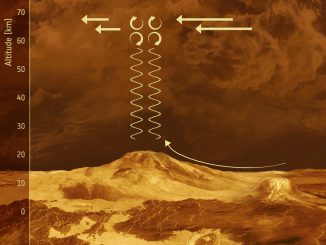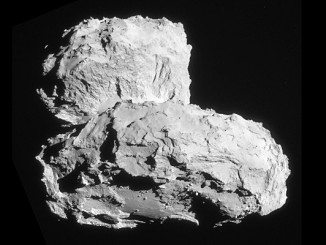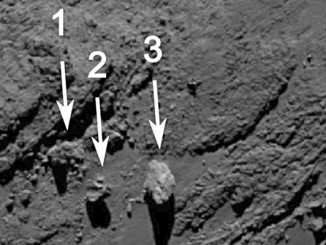
Max Planck Institute for Solar System Research


Distant star Kepler 11145123 is roundest object ever observed in nature
A team of German researchers has succeeded in measuring the oblateness of a slowly rotating star with unprecedented precision using asteroseismology — the study of the oscillations of stars. The technique was applied to a hot and luminous star called Kepler 11145123 some 5,000 light-years away that is spherical to one part in 500,000.

What lies beneath – Venus’ surface revealed through the clouds
Using observations from ESA’s Venus Express satellite, scientists have shown for the first time how weather patterns seen in Venus’ thick cloud layers are directly linked to the topography of the surface below. Rather than acting as a barrier to our observations, Venus’ clouds may offer insight into what lies beneath.

New Ceres images show bright craters
Craters with bright material on dwarf planet Ceres shine in new images from NASA’s Dawn mission taken from its lowest-altitude mapping orbit. Young crater Haulani (diameter 21 miles) and 6-mile-wide Oxo Crater — the second-brightest feature on Ceres — provide scientists with insight into the dwarf planet’s materials and surface morphology.

New clues to dwarf planet Ceres’ bright spots and origins
The surface of Ceres, whose average diameter is 584 miles, is generally dark and similar in brightness to fresh asphalt. But the dwarf planet does possess 130 mysterious bright areas associated with impact craters that new research suggests are salt-rich areas left behind when briny water-ice from a subsurface layer sublimated in the past.

Computer simulations explain Jupiter’s wild weather
The numerous whirlwinds covering Jupiter are caused by upward gas flows originating deep within the giant planet. This is the conclusion reached by scientists at the University of Alberta (Canada) and the Max Planck Institute for Solar Research (MPS) in Germany after extensive computer simulations. Their models also explain why the Jovian whirlwinds’ direction of rotation is opposite to storms on Earth.

How Rosetta’s comet got its shape
The origin of of Comet 67P/Churyumov-Gerasimenko’s double-lobed form has been a key question since Rosetta first revealed its surprising shape in July 2014. By studying the layers of material seen all over the nucleus, scientists have shown that the shape arose from a low-speed collision between two fully fledged, separately formed comets.

Hot lava flows discovered on Venus
The European Space Agency’s Venus Express spacecraft has found the best evidence yet for active volcanism on Earth’s neighbour planet. Seeing the planet’s surface is extremely difficult due to its thick atmosphere, but radar observations by previous missions to Venus have revealed it as a world covered in volcanoes and ancient lava flows.

OSIRIS discovers balancing rock on comet 67P
Scientists from Rosetta’s OSIRIS team have discovered an extraordinary formation in the Aker region on the larger lobe of comet 67P/Churyumov-Gerasimenko. The largest of a group of three boulders with a diameter of approximately 30 metres appears to perch on the rim of a small depression. There seems to be only a very small contact area with the nucleus.

